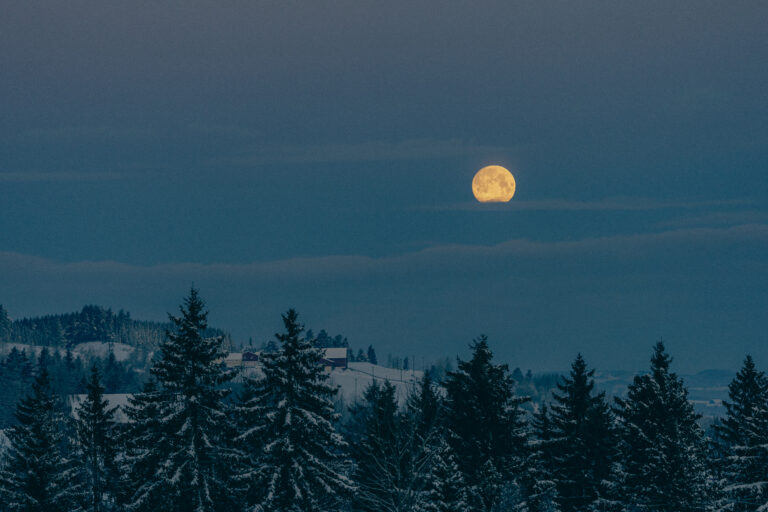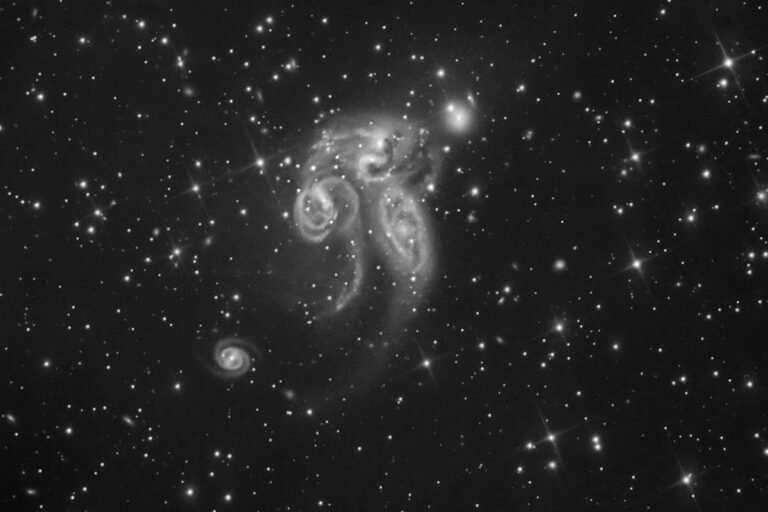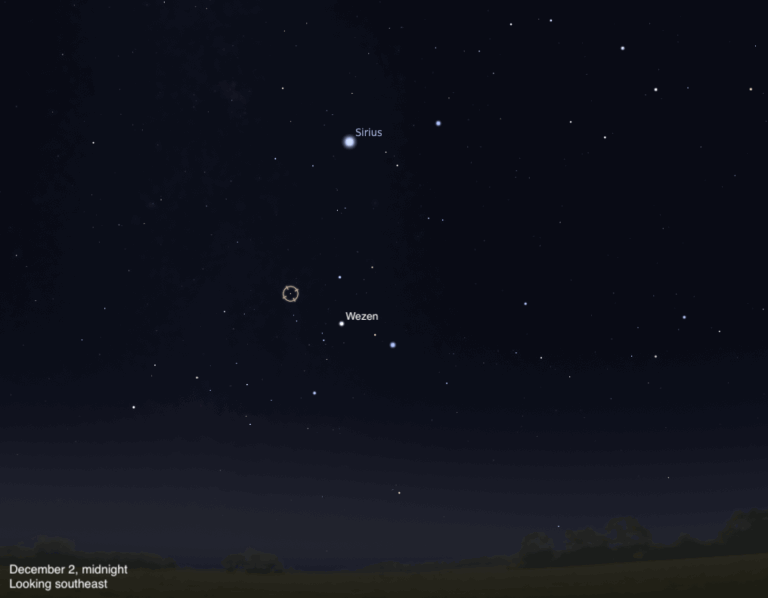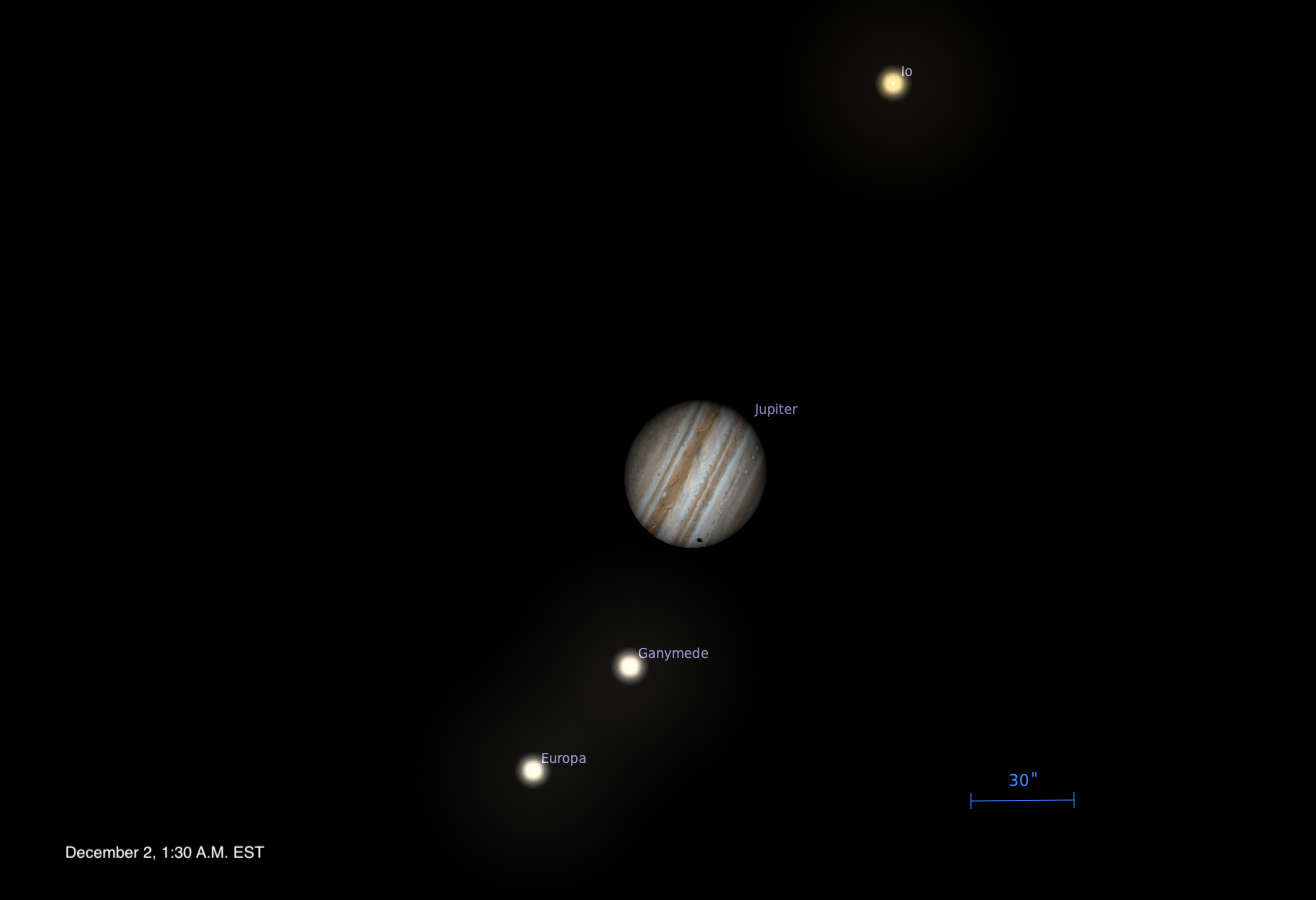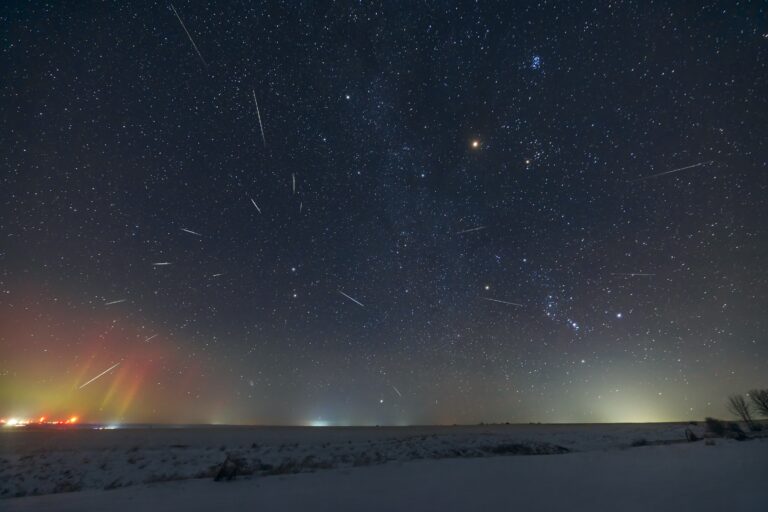Key Takeaways:
Friday, June 9
Full Moon occurs at 9:10 a.m. EDT, though our satellite still looks completely illuminated this evening. You can find it low in the southeast as darkness falls and peaking in the south around 1:30 a.m. local daylight time. The Moon lies on the border between Ophiuchus the Serpent-bearer and Sagittarius the Archer, just 3° north of magnitude 0.0 Saturn.
Saturday, June 10
Jupiter appears halfway to the zenith in the southern sky during twilight this week and doesn’t set until after 2 a.m. local daylight time. The brilliant planet shines at magnitude –2.2 and dominates the evening sky — excepting the Moon, of course. It appears nearly stationary against the background stars of Virgo, some 11° northwest of the Maiden’s brightest star, 1st-magnitude Spica. When viewed through a telescope, Jupiter’s disk spans 40″ and shows a wealth of detail in its massive atmosphere.
Sunday, June 11
There’s a second solar system object within a stone’s throw of Spica, and it appears even closer to the star than Jupiter. Asteroid 12 Victoria glows dimly at magnitude 10.7, however, so you’ll need a telescope to track it down. The asteroid lies 2.5° west-northwest of Spica and just 0.2° east-northeast of 7th-magnitude 56 Virginis. If you sketch the field tonight and then return to the same area tomorrow, you should be able to detect the asteroid’s movement relative to the stellar backdrop.
Monday, June 12
Observers of the outer solar system get their first good views of Uranus before dawn during June. The best time to look for it is shortly before twilight begins around 3:30 a.m. local daylight time. Uranus then lies 10° high in the east among the background stars of Pisces the Fish. This morning, use binoculars to find the magnitude 5.9 planet 1° northwest of 4th-magnitude Omicron (o) Piscium. A telescope reveals Uranus’ blue-green disk, which spans 3.4″.
Tuesday, June 13
Look high in the northwest after darkness falls this month, and you will see the familiar sight of the Big Dipper. The Dipper is the most conspicuous asterism — a recognizable pattern of stars that doesn’t form a complete constellation shape — in the entire sky. It forms the body and tail of Ursa Major the Great Bear. Use the Pointers, the two stars at the bottom of the Dipper’s bowl, to find Polaris, which lies due north for everyone north of the equator. Polaris marks the end of the Little Dipper’s handle. On June evenings, the relatively faint stars of this dipper arc directly above Polaris.
Wednesday, June 14
For people who live near 40° north latitude, today marks the earliest sunrise of the year. Although the Northern Hemisphere’s longest day doesn’t occur until Earth’s summer solstice next week, earliest sunrise happens several days before and latest sunset several days after. The specific dates depend on your latitude, however — earliest sunrise at 30° north came on the 10th. In general, earliest sunrise occurs closer to the solstice the farther north you live.
Thursday, June 15
Saturn lies opposite the Sun in our sky today (officially at 6 a.m. EDT) and reaches its peak visibility for 2017. The ringed planet appears low in the southeast as darkness falls and grows more prominent as the evening wears on and it climbs higher. It stands about one-third of the way to the zenith in the southern sky around 1 a.m. local daylight time. Saturn lies among the background stars of southern Ophiuchus and shines at magnitude 0.0, nearly 10 times brighter than any of this constellation’s stars. When viewed through a telescope, the dramatic ring system spans 42″ and tilts 27° to our line of sight, while Saturn’s family of moderately bright moons appears next to the gorgeous world.
Friday, June 16
Neptune’s eastward motion against the background stars comes to a halt at 7 p.m. EDT. This so-called stationary point marks the beginning of the best period to observe an outer planet. Neptune rises around 1 a.m. local daylight time and appears nearly 30° high in the southeast as morning twilight commences. The magnitude 7.9 planet lies in Aquarius, 17′ (about half the Moon’s diameter) east of 6th-magnitude 81 Aquarii. Unfortunately, a bright gibbous Moon also stands near Neptune this morning, so you’ll be better off looking for it earlier or later this week. You’ll need binoculars to spy Neptune and a telescope to see its blue-gray disk, which spans 2.3″.
Saturday, June 17
Last Quarter Moon occurs at 7:33 a.m. EDT. The half-lit orb rises slightly after 1 a.m. local daylight time and climbs in the southeastern sky along with the background stars of Aquarius the Water-bearer.
Sunday, June 18
Although Venus reached its greatest elongation from the Sun earlier this month, it now rises earlier and climbs higher in the east before dawn. It rises shortly after 3 a.m. local daylight time and stands 15° above the horizon an hour before sunrise. It’s hard to mistake the inner planet for anything else — at magnitude –4.3, it shines brighter than any other point of light in the sky. When viewed through a telescope this morning, Venus’ disk spans 20″ and appears slightly more than half-lit.





